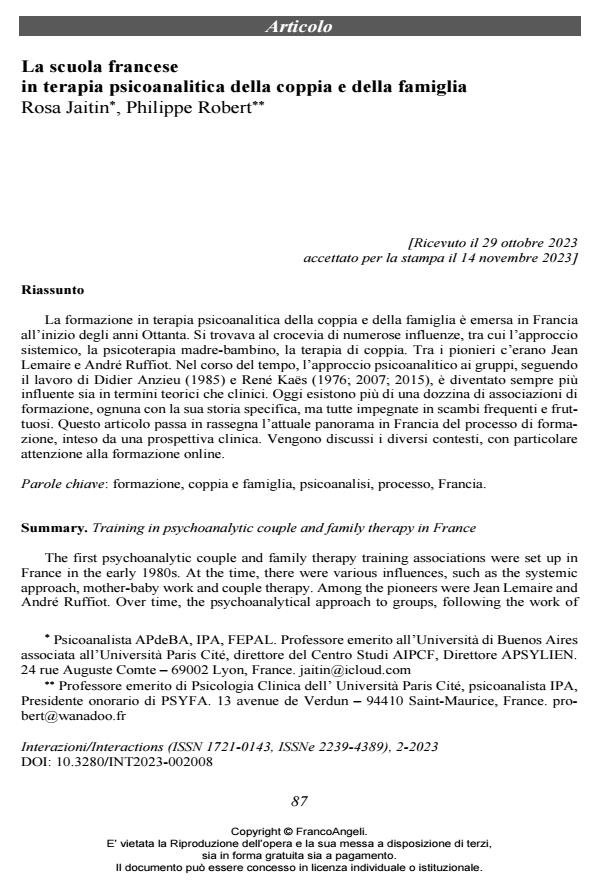Training in psychoanalytic couple and family therapy in France
Journal title INTERAZIONI
Author/s Rosa Jaitin, Philippe Robert
Publishing Year 2023 Issue 2023/2
Language Italian Pages 12 P. 87-98 File size 195 KB
DOI 10.3280/INT2023-002008
DOI is like a bar code for intellectual property: to have more infomation
click here
Below, you can see the article first page
If you want to buy this article in PDF format, you can do it, following the instructions to buy download credits

FrancoAngeli is member of Publishers International Linking Association, Inc (PILA), a not-for-profit association which run the CrossRef service enabling links to and from online scholarly content.
The first psychoanalytic couple and family therapy training associations were set up in France in the early 1980s. At the time, there were various influences, such as the sys-temic approach, mother-baby work and couple therapy. Among the pioneers were Jean Lemaire and André Ruffiot. Over time, the psychoanalytical approach to groups, follow-ing the work of Didier Anzieu (1985) and René Kaës (1976; 2007; 2015), became in-creasingly influential in both theoretical and clinical terms. There are now more than a dozen training associations, each with its own specific history, but all of which engage in frequent and fruitful exchanges. This article looks at the current state of the training pro-cess in France from a clinical perspective. Different frameworks are discussed, with a particular focus on online training.
Keywords: training, couple and family, psychoanalysis, process, France.
Rosa Jaitin, Philippe Robert, La scuola francese in terapia psicoanalitica della coppia e della famiglia in "INTERAZIONI" 2/2023, pp 87-98, DOI: 10.3280/INT2023-002008